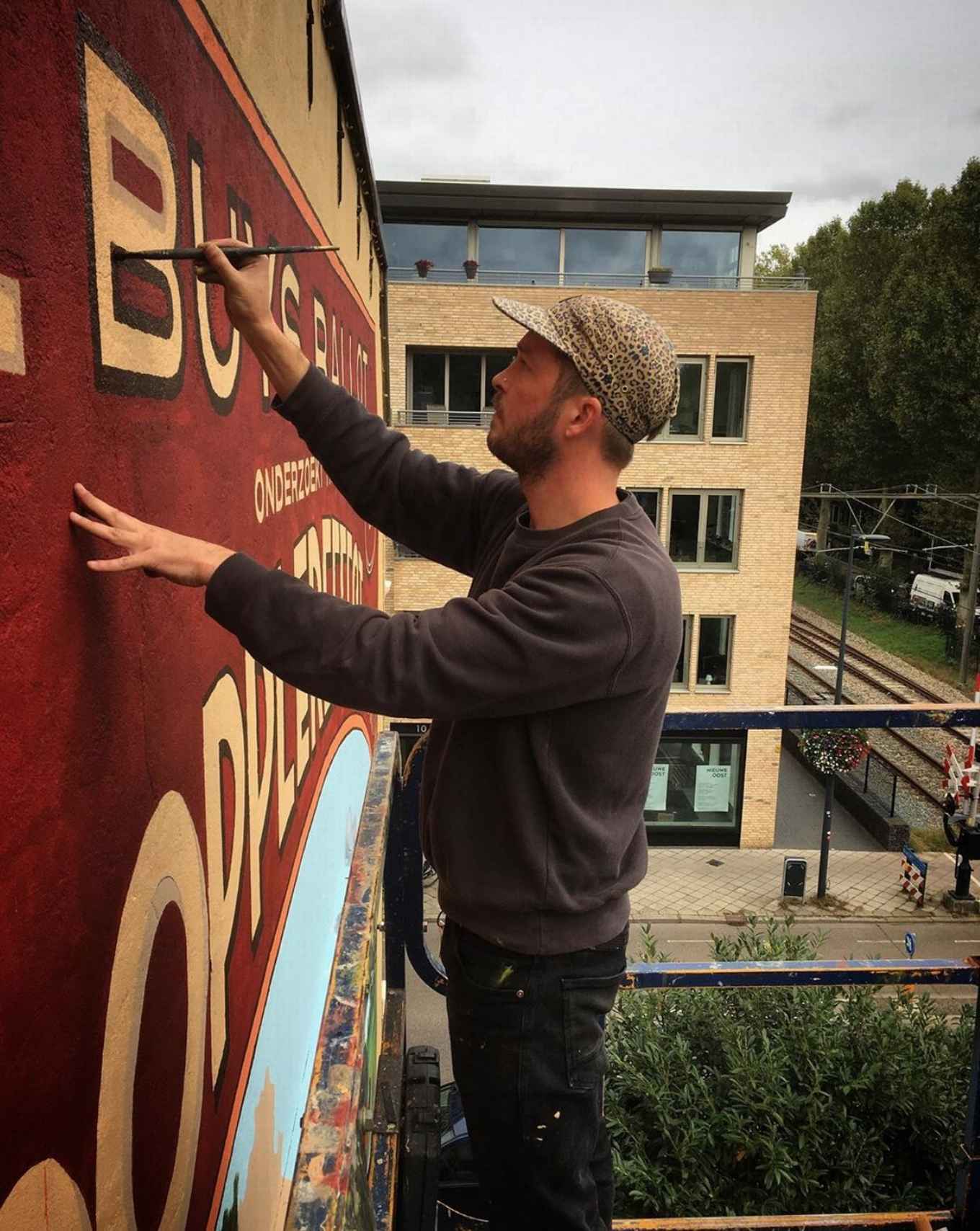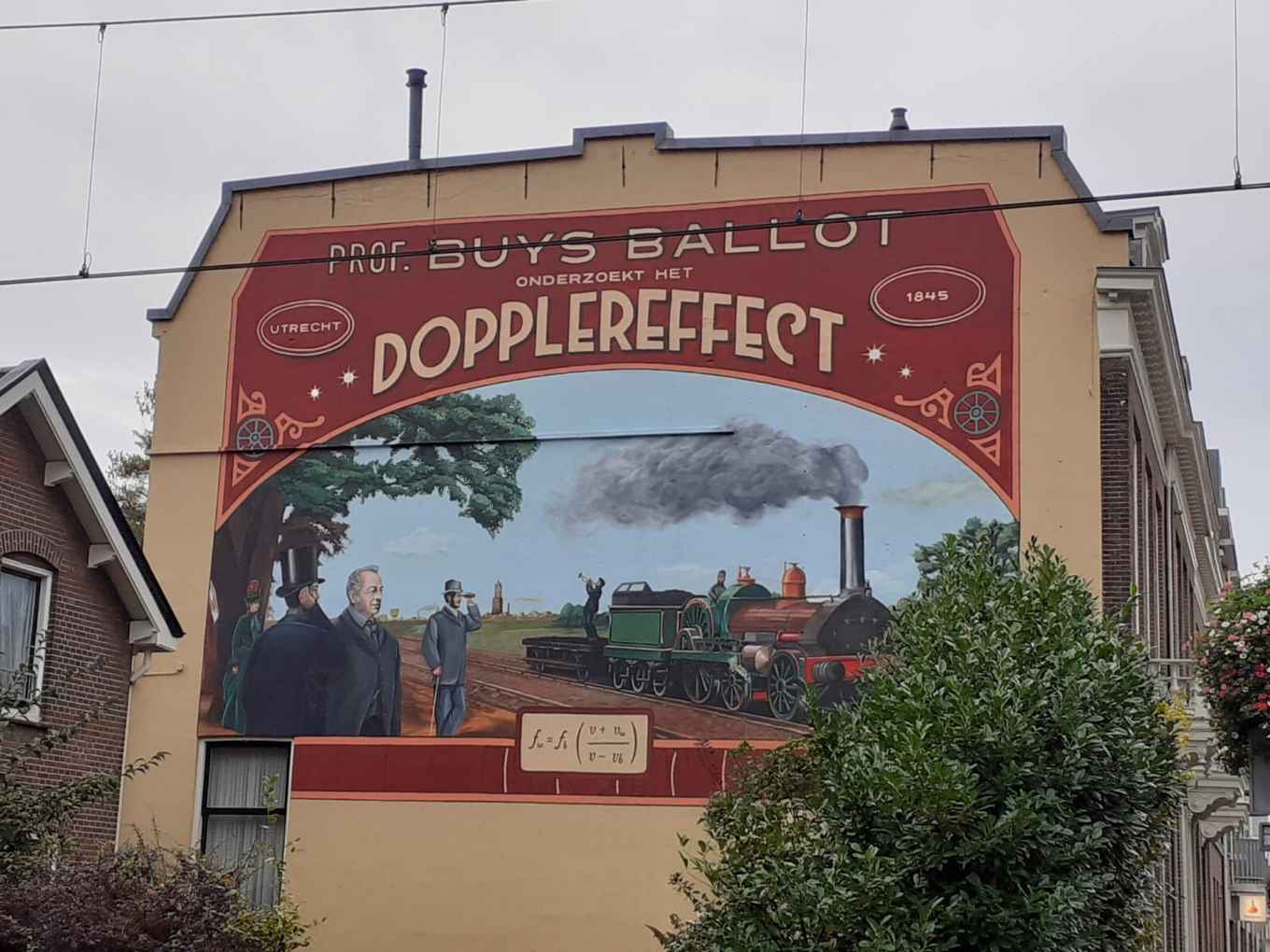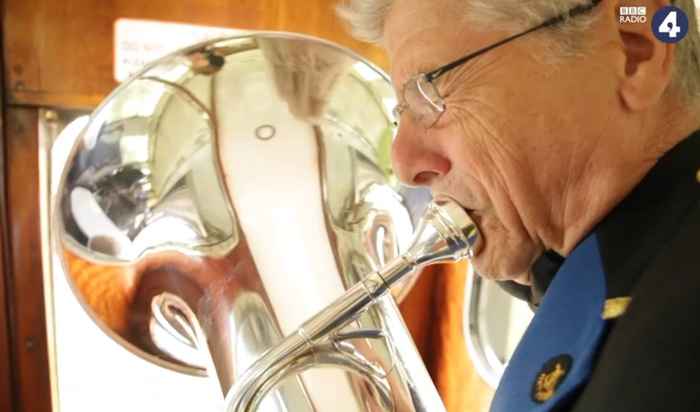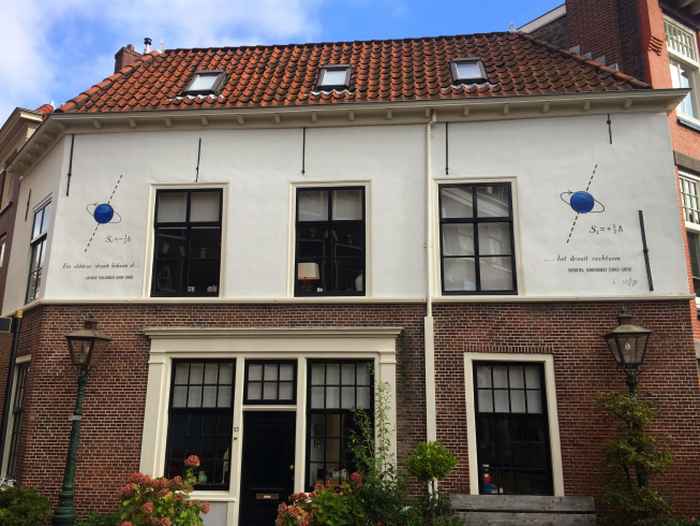First scientific mural painting in Utrecht: Buys Ballot proves the Doppler effect
19 October 2019

This first mural painting, on a building facade along the railway line at the Burgemeester Reigerstraat, portrays Christoph Buys Ballot (1817-1890), Professor at Utrecht University, who was the first to experimentally prove the Doppler effect. You can hear the Doppler effect when an ambulance or race car speeds past you: the car suddenly makes a much lower sound as it passes by.
The project was initiated by Utrecht physicists Sander Kempkes and Ingmar Swart, in collaboration with artist collective De Strakke Hand.

The Austrian scientist Christian Doppler had predicted the effect as early as 1842, but was not yet able to prove it experimentally. So when the brand-new railway line between Utrecht and Maarssen opened years later, Buys Ballot saw his chance: he borrowed a train, seated brass horn players in an open train car, and had observers along the tracks note the differences in tone. The scene has now been immortalised in the project’s first big mural.
The expanding universe
The Doppler effect not only causes funny sound effects when trains or ambulances pass by, the shifts in wavelengts of sound and light are of major importance in many fields of science. Air traffic control, radar equipment, clinical diagnostics and a number of other technologies are founded on the Doppler effect. On top of all that, the Doppler effect is a major factor in demonstrating the existence of an ever-expanding universe. Have a look at this nice video the BBC made in 2017, recreating the famous experiment by Buys Ballot, at a Loughborough railway station, with the help of the Great Central Railway and the Hathern Brass Band.
Scientists in Utrecht
Utrecht University has a rich history of interesting and influential discoveries by researchers who have left their stamp on a wide range of fields. The methods and principles they have come up with are still used by scientists today. But Utrecht’s scientists have done much more for their city than just their research. In 1854, for example, Buys Ballot founded the Royal Netherlands Meteorological Institute (KNMI) in the building we now know as Sonnenborgh Observatory.
This mural is therefore the first in a series of paintings about influential researchers from Utrecht. The organisers are currently looking for more suitable walls, and new murals featuring scientific formulas and experiments will appear throughout Utrecht over the next few years. "I wish the city many ugly grey walls, so that they can serve as canvases," said the mayor.
Leiden Wall Formulas
The project in Utrecht was inspired by a similar project in Leiden, the Leiden Wall Formulas. Currently, 7 out of 10 planned formulas are realized on Leiden city walls, including Einsteins Field Equation, the Lorentz Force, and the Electron Spin by Samuel Goudsmit en George Uhlenbeck.
About
The mural paintings are made possible by financial support from the Faculty of Science, the Department of Physics, the Institute for Theoretical Physics from Utrecht University, and the Delta Institute for Theoretical Physics.
All information on the Utrecht mural paintings can be found on Ingmar Swart's website (in Dutch). Currently, they are looking for suitable walls for their upcoming projects.

